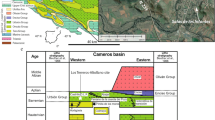Abstract
The early anthropoid species initially described asAegyptopithecus zeuxis Simons, 1965, from the Oligocene of Egypt, although retained by many authors in the monotypic genusAegyptopithecus, has been lumped by others into the genusPropliopithecus. Similarly, the species originally described asParapithecus grangeri Simons, 1974, has been ranked by some authors in a monotypic genusSimonsius, while others retain it inParapithecus. Criteria to be considered in resolving these taxonomic debates are (1) the adequacy and consistency of proposed morphological differences between species; (2) analogy with the degree of morphological variation tolerated within extant genera; and (3) nomenclatural conservatism. A philosophy that would require strict monophyletic classification is of insufficient practical value for assessing the validity of Fayum genera. Characters cited as distinguishing vetweenAegyptopithecus andPropliopithecus, and betweenSimonsius andParapithecus, are reviewed and evaluated. The results indicate thatA. zeuxis is generically distinct from species ofPropliopithecus, based on differences in the crown structure and proportions of the molars.Pa. grangeri cannot be shown to differ at the generic level from the type and only known specimen ofPa. fraasi, thus establishing Simonsius as a junior synonym ofParapithecus.
Similar content being viewed by others
References
Andrews, P. (1985). Family group systematics and evolution among catarrhine primates. In Delson, E. (ed.),Ancestors: The Hard Evidence. Alan R. Liss, New York, pp. 14–22.
Delson, E. (1979).Prohylobates (Primates) from the early Miocene of Libya: A new species and its implication for cercopithecid origin.Geobios 12: 725–733.
Fleagle, J. G., and Kay, R. F. (1985) The paleobiology of catarrhines. In Delson, E. (ed.),Ancestors: The Hard Evidence. Alan R. Liss, New York, pp. 23–36.
Fleagle, J. G., and Simons, E. L. (1982a). The humerus ofAegyptopithecus zeuxis, a primitive anthropoid.Am. J. Phys. Anthropol. 59: 175–193.
Fleagle, J. G., and Simons, E. L. (1982b). Skeletal remains ofPropliopithecus chirobates from the Egyptian Oligocene.Folia Primatol. 39: 161–177.
Gingerich, P. D. (1978). The Stuttgart collection of Oligocene primates from the Fayum Province of Egypt.Palaont. Z. 52: 82–92.
Ginsburg, L., and Mein, P. (1980).Crouzelia rhodanica, nouvelle espèce de Primate catarhinien, et essai sur la position systèmatique des Pliopithecidae.Bull. Mus. Natl. Hist. Nat. Paris 4e sé Sect. C 2: 57–80.
Harrison, T. (1987). The phyletic relationships of the carly catarrhine primates: A revicw of the current evidence.J. Hum. Evol. 16: 41–80.
Kälin, J. (1961). Sur les primates de l'Oligocène infèrieur d'Égypte.Ann. Paleont. 47: 1–48.
Kay, R. F., and Simons, E. L. (1980). The ecology of Oligocene African Anthropoidea.Int. J. Primatol. 1: 21–37.
Kay, R. F., and Simons, E. L. (1983). Dental formulae and dental eruption patterns in Parapithecidae.Am. J. Phys. Anthropol. 63: 353–375.
Kay, R. F., Fleagle, J. G., and Simons, E. L. (1981). A revision of the Oligocene apes from the Fayum Province, Egypt.Am. J. Phys. Anthropol. 55: 293–322.
Leakey, R. E., and Leakey, M. G. (1987). A new Miocene small-bodied ape from Kenya.J. Hum. Evol. 16: 369–387.
Mayr, E. (1981). Biological classification: Toward a synthesis of opposing methodologies.Science 214: 510–516.
Schlosser, M. (1910). Uber einige fossile Saugetiere aus dem oligocan von Agypten.Zoo. Anz. 34: 500–508.
Schlosser, M. (1911). Beitrage zur Kenntnis der Oligozanen Lansaugetiere aus dem Fayum, Aegypten.Beitr. Palaeontol. Oesterreich-Ungarns Orients 6: 1–227.
Simons, E. L. (1965). New fossil apes from Egypt and the initial differentiation of Hominoidea.Nature 205: 135–139.
Simons, E. L. (1967). The earliest apes.Sci. Am. 217: 28–35.
Simons, E. L. (1974).Parapithecus grangeri (Parapithecidae, Old World Higher Primates): New species from the Oligocene of Egypt and the initial differentiation of Cercopithecoidea.Postilla 166: 1–12.
Simons, E. L. (1986).Parapithecus grangeri of the African Oligocene: An archaic catarrhine without lower incisors,J. Hum. Evol. 15: 205–213.
Simons, E. L., Rasmussen, D. T., and Gebo, D. L. (1987). A, new species ofPropliopithecus from the Fayum, Egypt.Am. J. Phys. Anthropol. 73: 139–147.
Swindler, D. R., and Olshan, A. F. (1982). Molar size sequence in Old World Monkeys.Folia Primatol. 39: 201–212.
Szalay, F. S., and Delson, E. (1979).Evolutionary History of the Primates, Academic Press, New York.
Author information
Authors and Affiliations
Rights and permissions
About this article
Cite this article
Simons, E.L., Rasmussen, D.T. The generic classification of Fayum anthropoidea. International Journal of Primatology 12, 163–178 (1991). https://doi.org/10.1007/BF02547579
Received:
Revised:
Issue Date:
DOI: https://doi.org/10.1007/BF02547579




